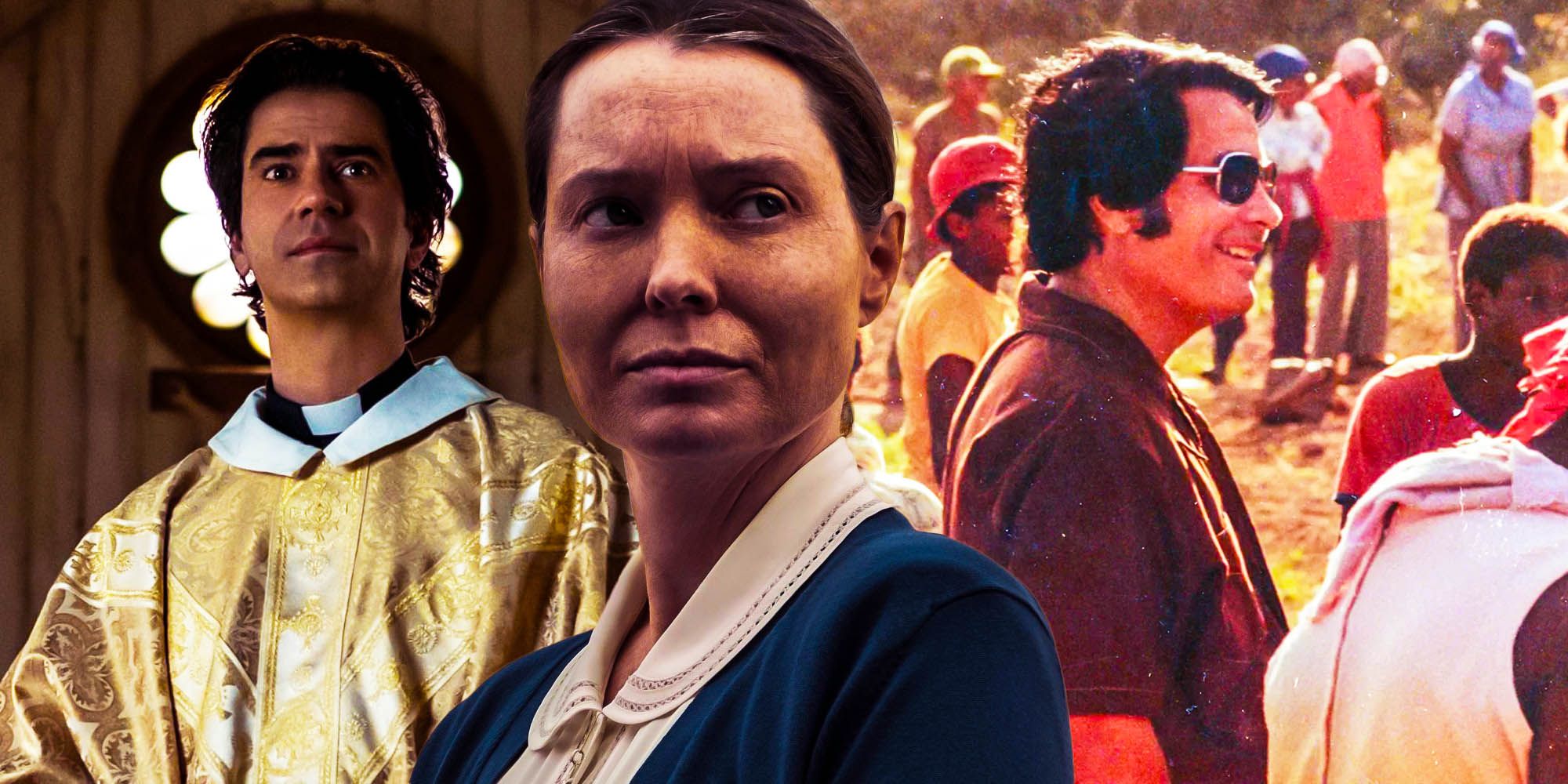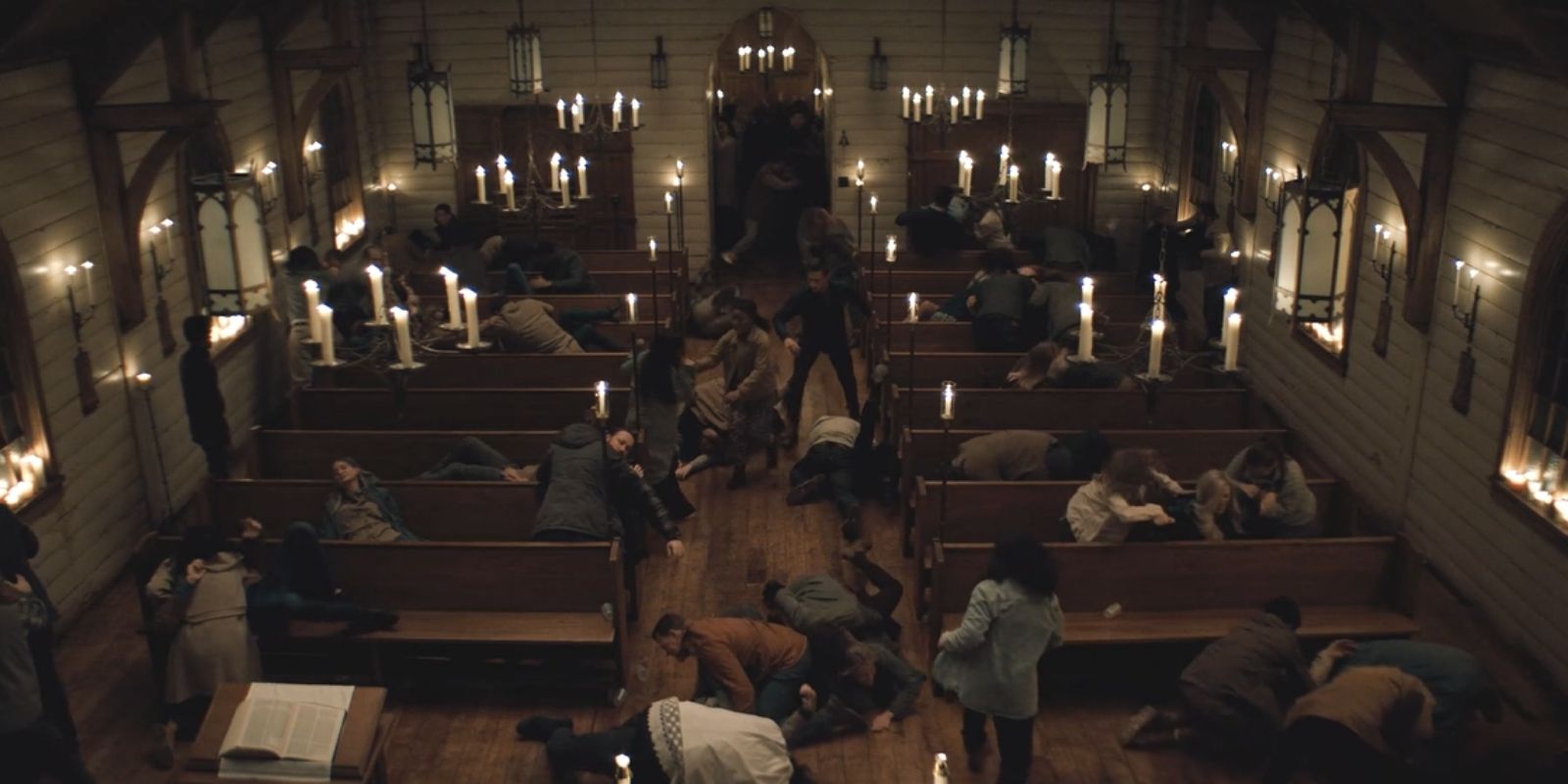The shocking mass suicide scene in Midnight Mass was the culmination of the island’s plunge into religious fanaticism, with the horrific event being inspired by the real-life Jonestown tragedy. While the series takes great lengths to stray from the expectations of vampiric lore by Midnight Mass refusing to use the word “vampire,” the horrors of the show’s religious zealotry are underscored by the fears of a familiarly terrifying vampire creature. More than just a genre horror series, Midnight Mass explores the dangers of religious fanaticism through human monsters, which is why it isn’t surprising that the series connects to real-life fanatic tragedies.
Midnight Mass already featured some disturbingly shocking scenes with the show’s vampire creature infiltrating Crockett Island, but the most distressing event came in episode 6, “Acts of the Apostles,” when the parishioners are encouraged to drink poison. Monsignor Pruitt and Bev Keane explain that drinking the poison will lead them to “resurrect” through God’s miracle, an apt demonstration for the town’s Easter midnight mass. In order to be “reborn” through their dedication to God, nearly every Midnight Mass character drinks the poison and briefly dies, moments later resurrected as a vampire. To make the scene all the more chilling, those who have taken their own mortal lives become subject to their now-vampiric urges, drinking the blood of those who didn’t take the poison.
The self-induced massacre in Midnight Mass is eerily reminiscent of the most infamous mass suicide of Jonestown, a settlement in Guyana established by the San Fransisco-based cult the Peoples Temple. The cult was founded by Jim Jones, a charismatic churchman who was convinced the U.S. government was out to get him and disband his congregation, which made him highly paranoid and led him to create mass suicide drills for his members. When one congressman came to investigate the Jonestown cult in 1978, Jones believed he would return to the U.S. and destroy the community. In response, Jones gathered his people and instructed everyone to take part in a “revolutionary suicide,” with his aides concocting poison-infused powdered juice drinks that would be given to the youngest members first before the adults took it themselves. In an even more clear connection to Midnight Mass, though without the vampirism, Jones had discussed the possibility of reincarnation before his congregation drank the poison.
A total of 909 people died from the event, with all but two deaths accounted for by cyanide poisoning. Like Midnight Mass, those who refused to take the poison were punished by either being injected with the poison or threatened with being shot by guards, though the TV show’s punishment meant having one’s blood drank by the vampires. The connection between the Jonestown massacre and Midnight Mass’s terrifying vampire massacre is clear, with zealotry being the instigator for the mass suicides. Through the shocking scene in Midnight Mass, Mike Flanagan is equating religious fanaticism with modern cultism. Midnight Mass’s comparison highlights the show’s zealotry being just as dangerous as that of Jonestown, with religion long having a connection to popular cultism for this reason.
In the present day, cults have been described as groups with an unusual devotion to religious practices, figures, or spiritual and philosophical beliefs. Cults have a negative connotation today, especially when they’re largely associated with examples like Jonestown or the Manson Family, but under the real academic definition, religions have all been cults at their conceptions. Long-established religions have tended to stray from the self-destructive and oppressive behavior stereotypical of cults, but Midnight Mass's religious themes explain that adhering to such extreme exploitative zealotry under established religions like that in the series has the same negative effect, no matter what name it goes under. Midnight Mass warns that just because a religion like Christianity has left the mainstream sociological cult status, that doesn’t mean certain levels of devotion or interpretation are exempt from the destructive dangers of pejorative cultism.


